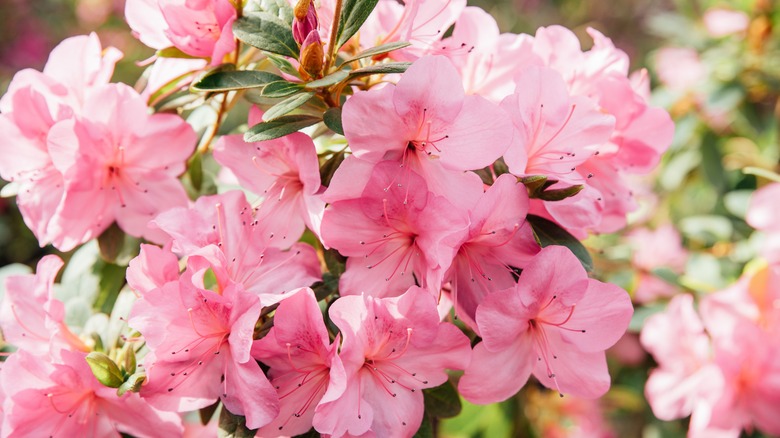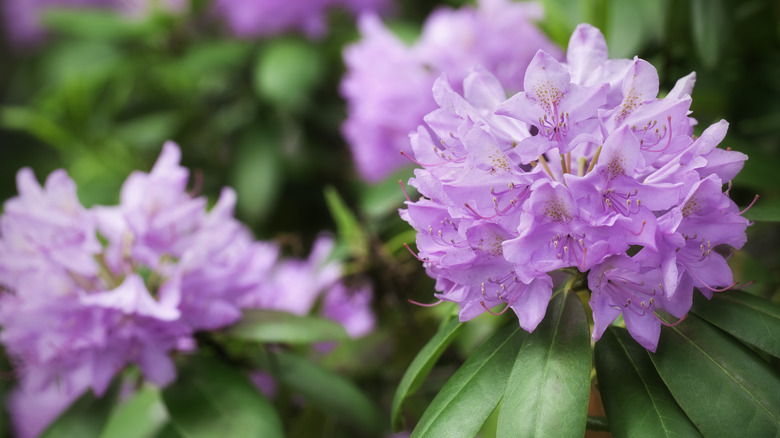Both shrubby and climbing hydrangeas are attractive and popular garden plants that bloom from mid to late summer. They produce long-lasting flowers in a pretty range of summery blues, pinks, and white, as well as other, more muted autumnal color varieties. If you’re looking for ideal companion plants for your hydrangeas, azaleas are a great option, as they share many of the same growing conditions but start flowering slightly earlier than hydrangeas in the spring. They also bloom for three seasons — spring, summer, and fall – meaning your garden will look lovely for longer.
Did you know that hydrangeas can thrive in both acidic and alkaline soils, and that the type of soil you use will affect what color hydrangeas bloom? Azaleas need acidic soil with a pH of 4.5 to 6.0. This means that if you plant these two plants together in the same soil, your hydrangeas will have blue flowers. This is useful to keep in mind because you can plant your azaleas separately from your hydrangeas in containers if you want a different variety of colors. When planting them together in the same soil, however, the white or yellow azaleas contrast well with blue hydrangeas.
How to grow hydrangeas and azaleas together

When planting your hydrangeas and azaleas together, you should make sure to do so in a cool, shaded spot in your garden, like under a tree that lets enough dappled light through to ensure proper blooming. These are definitely shrubs that will thrive with some shade. Make sure to use slightly acidic, well-draining soil and high-quality organic mulch.
One of the main differences between azaleas and hydrangeas is their root systems. Azaleas are shallow-rooted flowering shrubs, whereas hydrangeas are deep-rooted. This means you have to be extra careful when doing gardening projects around azaleas. Ensure the root balls don’t sit too deeply underneath the surface when you plant them. To achieve this, you should dig a wide hole rather than a deep one, making the hole as deep as the rootball and three times wider. Then back fill it with leaf mold and peat-free ericaceous compost, mulching annually.
The decaying leaves are an ideal soil conditioner, and the peat-free ericaceous compost will suit plants like azaleas and blue hydrangeas, which prefer acidic soil. Rainwater is better than the more alkaline tap water when watering azaleas.
Hydrangeas vs azaleas vs rhododendron

Azaleas and rhododendrons both now belong to the Rhododendron genus, as they are so similar. In fact, it can be tricky to differentiate between the two. However, there are a few differences, with one of the main ones being that rhododendrons tend to grow much larger. This can be useful when considering which to plant with your hydrangeas, depending on the look you are going for and the space you have available in your garden.
An interesting feature of hydrangea flowers is that though they dry up, they still remain on the plant throughout the winter rather than falling off as Rhododendron flowers do, including azaleas. This means that during winter, these plants are flowerless.
Overall, azaleas tend to be the more hardy plant that does better in colder temperatures. Azaleas may also be a better choice than rhododendrons to pair with your hydrangeas because rhododendrons are more of a statement plant than the slightly more subtle azaleas and therefore may outshine your hydrangeas, depending on how you decide to plant them and the space in your garden.




